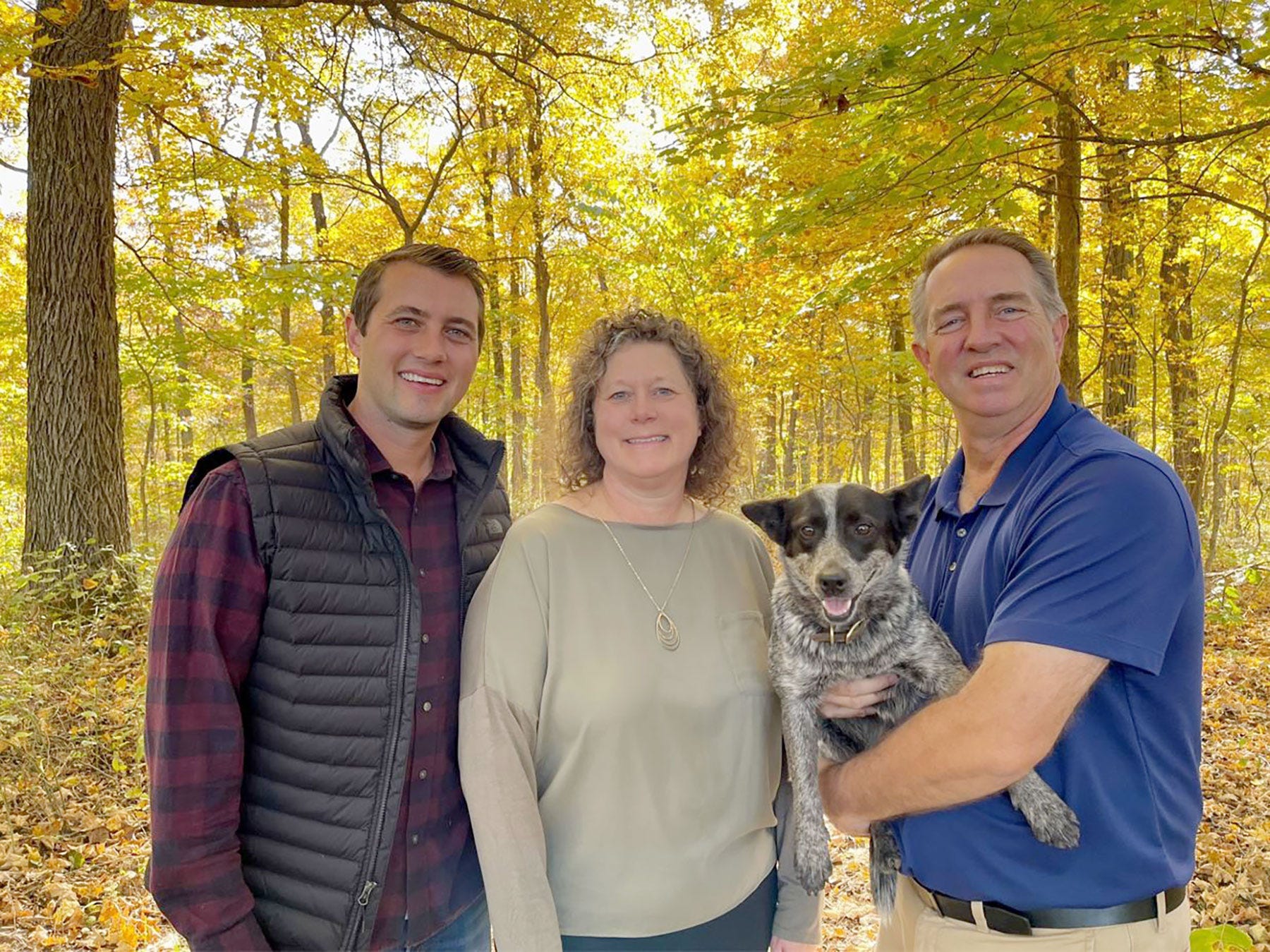
Can you produce beef — from the calf to the dinner table — without adding to net carbon in the atmosphere? Dave Fischer believes he can, and he is on a mission to make it happen. He is not there yet, but he moves closer every day.
Fischer and his wife, Diana, Dubois County, Ind., operate Fischer Farms, which produces high-quality, natural beef and delivers it to Indiana University dining halls, 150 restaurants, multiple retailers and online customers on a weekly basis. Fischer manages the farm and a 450-cow beef herd while Diana makes sure natural beef, pork and other meats get to customers on time.
These days, though, Fischer also manages a multimillion-dollar, five-year project designed to explore new ways to reduce greenhouse emissions while producing beef. At the same time, he is working to expand the scope beyond his herd to other producers.
Fischer Farms was one of a few noninstitutional entities to obtain a Climate-Smart Commodities grant from USDA. This is the second year of the grant. Fischer’s mission is to recruit other producers to raise high-quality beef using the environmentally friendly, proven production practices he develops during the project.
“We have over 20 producers working with us now, and the goal is to reach 100 by the end of the project,” Fischer says. “They must follow the guidelines we require, and if they do, they can earn handsome premiums over regular market prices.”
Capturing carbon
Fischer relies heavily on annual ryegrass as a primary forage and cover crop on his rolling land. Not only does it make good haylage to mix with corn silage in a total mixed ration, but it returns carbon to the soil, in part due to the mass and depth of roots it produces.
“My research indicates ryegrass can produce 4,000 pounds of roots per acre, about the same as corn,” Fischer says. “Wheat only produces about 1,500 pounds, and soybeans around 750 pounds.
“Besides, it is a great scavenger of nitrogen. Annual ryegrass haylage normally averages around 16% in protein, but I know of an instance where someone applied a large amount of manure and later harvested the ryegrass. It tested over 40% for protein!”
One of Fischer’s early goals in the project is documenting just how much carbon he captures in the soil. Accurate measurement of carbon is often cited as one of the biggest challenges in the carbon economy. In his case, Natural Resources Conservation Service staff used a hydraulic probe truck to pull dozens of soil cores, each over 3 feet deep, from various fields late in 2023. Currently, Geospherics, Bloomington, Ind., a company with experience in quantifying carbon, is analyzing those cores to determine carbon content at various depths.
“Students from IU environmental study classes visit the farm occasionally, and time and again, students think I should be planting trees on these hills to capture more carbon,” Fischer notes. “One thing we’ve learned already from coring is that we have built up far more organic matter with annual ryegrass and other cover crops in the past 20 years than in our woods.
“Cores in the woods show about 4 inches of topsoil. We’ve built back from a few inches of topsoil to 9 to 14 inches in some of our fields already. You can build back soils and capture carbon faster with cover crops than trees.”

SOIL BUILDERS: Dave and Diana Fischer and their son Joe run Fischer Farms in Dubois County, Ind. While they enjoy their scenic woods, Dave says he rebuilds soil faster by planting cover crops on farmland rather than trees. (Courtesy of Dave Fischer)
Next steps
What will it take to make Fischer’s beef operation carbon negative, capturing more carbon than it releases into the atmosphere?
Capture carbon through plants. “We’ve made the first step by building our nutritional program around forages,” he says. “We’re capturing more carbon. The only corn we grow here is after we chop annual ryegrass, and it is for corn silage. Then the field goes back into cover crops.”
Reduce methane emissions. “We feed brown kelp as an additive, and that knocks down methane production around 10% to 30%,” Fischer explains. “Red kelp is much more effective, but it is difficult to obtain right now.”
Reduce nitrogen use in crops. Products already on the market claim to reduce the amount of commercial nitrogen corn needs by helping plants obtain a portion from the atmosphere. These products deserve a closer look and more testing, Fischer says.
Build up soil biome. “We also utilize the Haney test to measure soil biology,” Fischer says. “From five tests sampled last year, four showed very high activity and one scored high. These tests help us gauge how well we’re doing at building up soil biology.”
Continue searching for answers. “I believe we’ve only scratched the surface in what we can achieve through utilizing soil health,” Fischer says. “Twenty years from now, I believe we will apply far less nitrogen and phosphorus than we do today.
“We must learn to manage economically and environmentally at the same time. We can’t just manage for the environment. What we do must be economically sound too. We’re making progress, but it will take time.”
About the Author(s)
You May Also Like




